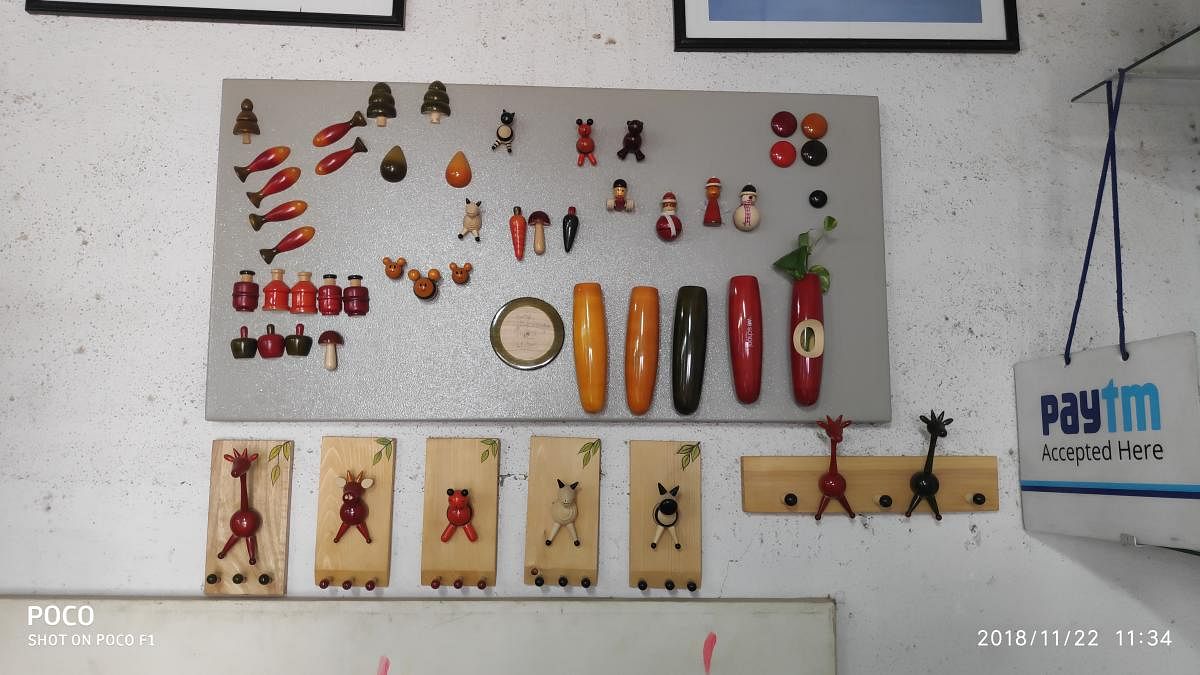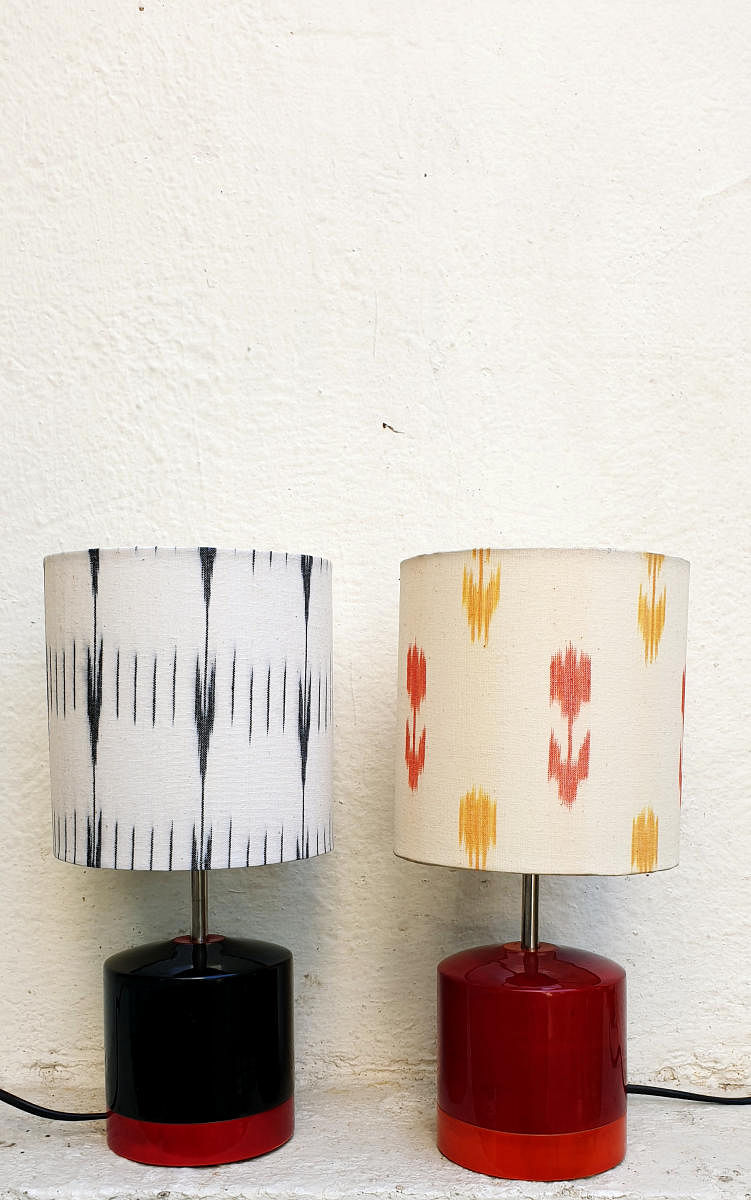

Tucked between the cities of Bengaluru and Mysuru lies Channapatna, a town known for its unique wooden toys. Home to many thousands of artisans, the toy town’s (Gombegala Ooru) association with the craft is believed to have begun nearly 200 years ago under the reign of Tipu Sultan, who is said to have been gifted a lacquered-wood toy from Persia in the 18th century. Impressed by the craftsmanship of the toy, he is said to have asked for artisans from Persia to be brought in to train locals to make such toys. Artisans who learnt the craft settled in Channapatna, a town located near his capital, Srirangapatna.
While the craft has attracted consumers from the country and even abroad, the allure of Channapatna toys has faded in the past few years due to various reasons like the influx of Chinese toys. As a result, many of the traditional craftspeople have moved on to other professions or migrated to cities in search of a better livelihood. For those who are still engaged in the craft, they are facing many problems such as less demand for the toys. However, their fortunes may be turning around. To help these artisans and ensure that they have a sustainable livelihood, there have been sustained efforts from independent designers, artists, and non-profit organisations who have been working alongside them. Additionally, they are also looking to not only revive this craft but also preserve the legacy of these toys.
One such organisation is Maya Organics that was started in 2004. This livelihood development initiative is involved in developing a network of artisans, workers and micro-entrepreneurs capable of producing high-quality wooden products. Not only do they equip existing artisans with new skills, particularly design and product development, they also train new artisans, mostly women, into the handicraft cluster that predominantly consists of men. Doing so helps them revive the cluster with an infusion of fresh skills, designs and markets. “Our main objectives include bringing female artisans into the fold, training them, developing new designs, production and marketing,” shares Shrinivas B K, production in charge at the initiative’s facility in Channapatna.
Infusing new life
As one takes a walk through their facility, one can see the care they have taken at every stage of the production to ensure that the products are of good quality. It is for this reason that they have created a ‘job cart’, where artisans are provided with a task suited to their skill. There are four groups, each having around eight to 10 artisans, and each group has artisans of different skills. While one group is dedicated solely for the training of new artisans, the remaining groups consist of artisans of different skills. To keep them motivated, they conduct a skill test every six months and if their skills have improved, they move on to the group that matches their skills. The products they make fall into three categories: home accessories, toys and educational products needed for Montessori classes. “Since the time I joined three years ago, I have made a variety of products. A lot of work goes into designing a quality product. One should be confident and have the interest to pick up new skills and grow as there is so much to learn,” shares Durga, an artisan who works with Maya Organics.
Design development is an essential process that Maya Organics engages in. Though they keep stock of designs that sell well, they also develop new ones during the lean period of sale. This ensures the quality of products they produce. “There are times when artisans do tend to copy designs that work well, directly or indirectly. Our focus is to generate new designs and give better market access to the artisans working in the industry,” says Shrinivas.
The major raw material for the toys is the aale mara (ivory wood), a softwood found in abundance locally. As it is light and has grains that are tightly packed, this wood is preferred by many artisans to make the products. Other advantages of the wood include its clean light colour, and that the bright colours of lacquer show easily on its surface.
Once the wood is procured, it is cut into square, circular or cylindrical pieces based on the design, using a lathe machine and is later dried naturally for around two to three months. As the drying process for the wood pieces can get a bit difficult during the monsoon, Maya Organics has installed an oven that quickens the drying process. With the oven, it takes around 15 days to dry. The pieces are smoothed after which the lacquer (lac), coated with vegetable and natural dyes, is applied. The latter is done on the lathe machine itself so that the lacquer bonds well with the wood while it is still hot due to friction. After uniform applications, the pieces are removed and assembled together based on the design. Final touches are given in the form of decoration and painting.
The products’ USP is that they use organic colours as opposed to those containing lead. The artisans colour the parts with lac, a natural resin, and polish using palm leaves, which Shrinivas of Maya Organics says is essential to bring the glossy finish to the end product. “When heated, the lac melts and we are able to add the colour we want using natural ingredients. For instance, if we want yellow we use turmeric, for orange we use kumkum, for blue we use indigo. However, the number of non-toxic, natural colours we get is only around six to seven,” he adds.
Atul Johri, an architect and product designer, is another person who has been actively working with Channapatna artisans and is developing interesting interior products using the Channapatna lacquer craft, after a visit to Bengaluru in the early 2000s. A conversation with people who were doing a documentary on Channapatna prompted him to visit the place. “Having heard a lot about the craft, I expected a lot but was disappointed. The artisan I visited was waiting for a chance to grow. I decided to help and see where it goes. So I visited every week for around 18 months and was able to make my first collection,” says Atul.
After a while, he decided to move to Channapatna to engage with more artisans directly and bring in more work for them. With the motive of cutting out the middlemen, he started providing the design and got the artisans to work from their own units, working with the traditional methods to produce edgy, contemporary objects. “I hoped to bring about a growth into the craft by bringing in more people to work with them and bring in new designs as well,” shares Atul. “My thought has always been on how can I bring in design innovation for the artisans when they do not have access to the market.”
Working with artisans
Like Atul, Karthik Vaidyanathan decided to work alongside Channapatna artisans after stopping by the town during a visit in 2011. Struck by the way they are made, Karthik spent the first few weeks visiting the artisans and observing their production processes while gaining a hands-on experience. He then started working with the artisans one design at a time. Soon, he had a collection that included products such as lamp stands, jars and napkin holders that were made with the traditional methods used to make the toys. Buoyed by the success these products had in an exhibition, Karthik started Varnam Craft Collective, a Bengaluru-based social enterprise that has been working with artisans in Channapatna.
Though it remained popular for its design and the use of eco-friendly colours, the Channapatna toys’ popularity has been waning over the past few years. This, as a result, has affected many artisans. “Channapatna has the potential to feed the world market with its products, especially in a time when plastic is known to be a hazard. Channapatna is, in fact, known for its wooden toys. But where are the toys? Half of the toys that we see today in the name of ‘Channapatna toys’ are made in China. As a result, the artisans are not able to compete with these kinds of products,” states Atul. Due to these changes, many artisans are turning to other professions as a way to alleviate their financial difficulties. “When I first started making the toys 13 years ago, the times were different. The market, price and demand were good. But today, it is not the case with some facing financial difficulties due to a lack of sale. For example, I have not been able to recover most of the payment that I am due,” shares Saddam, an artisan.
With a handful of artisans now working in Channapatna, there is much needed to be done to ensure that Channapatna’s craftwork does not disappear.